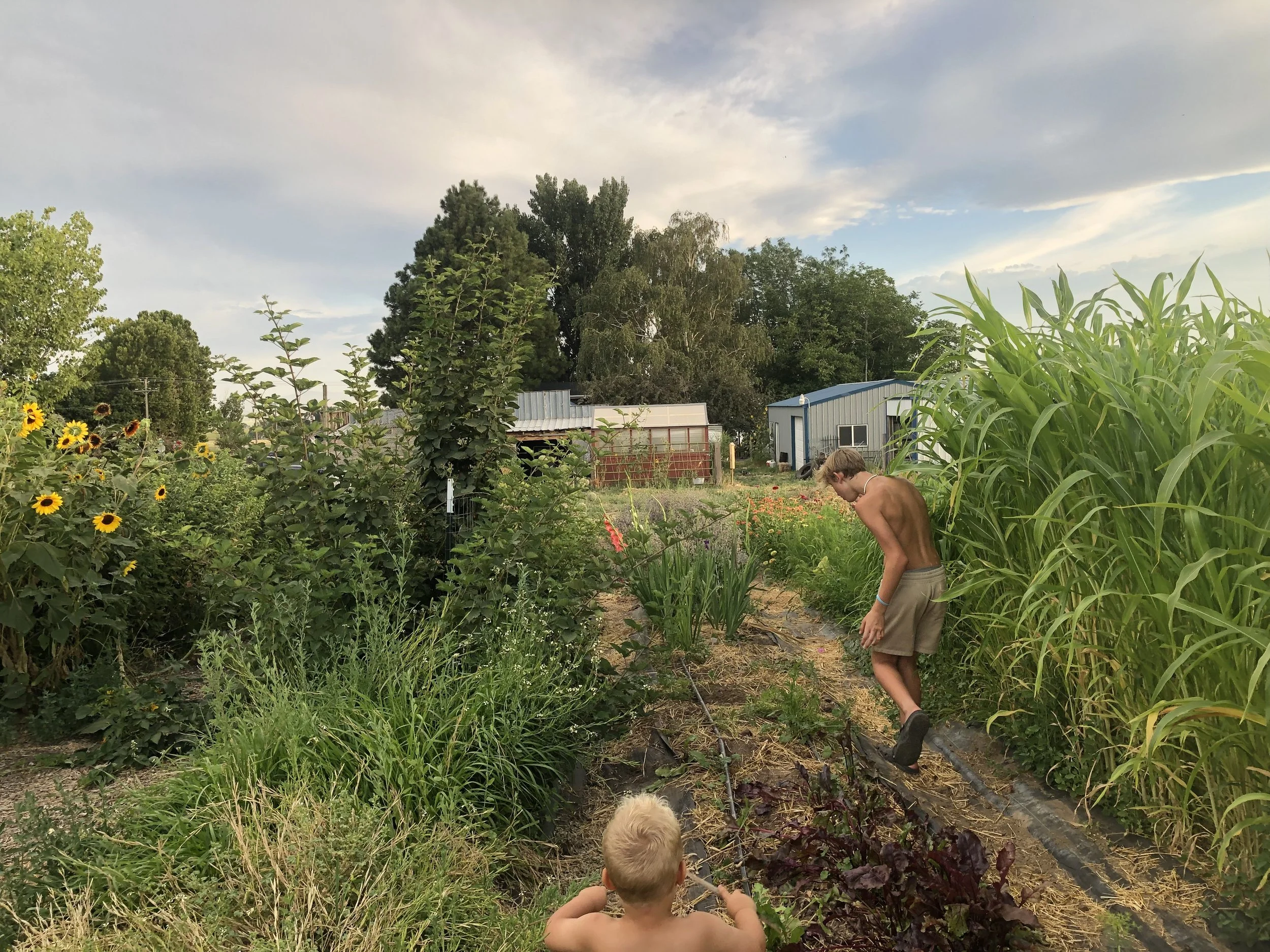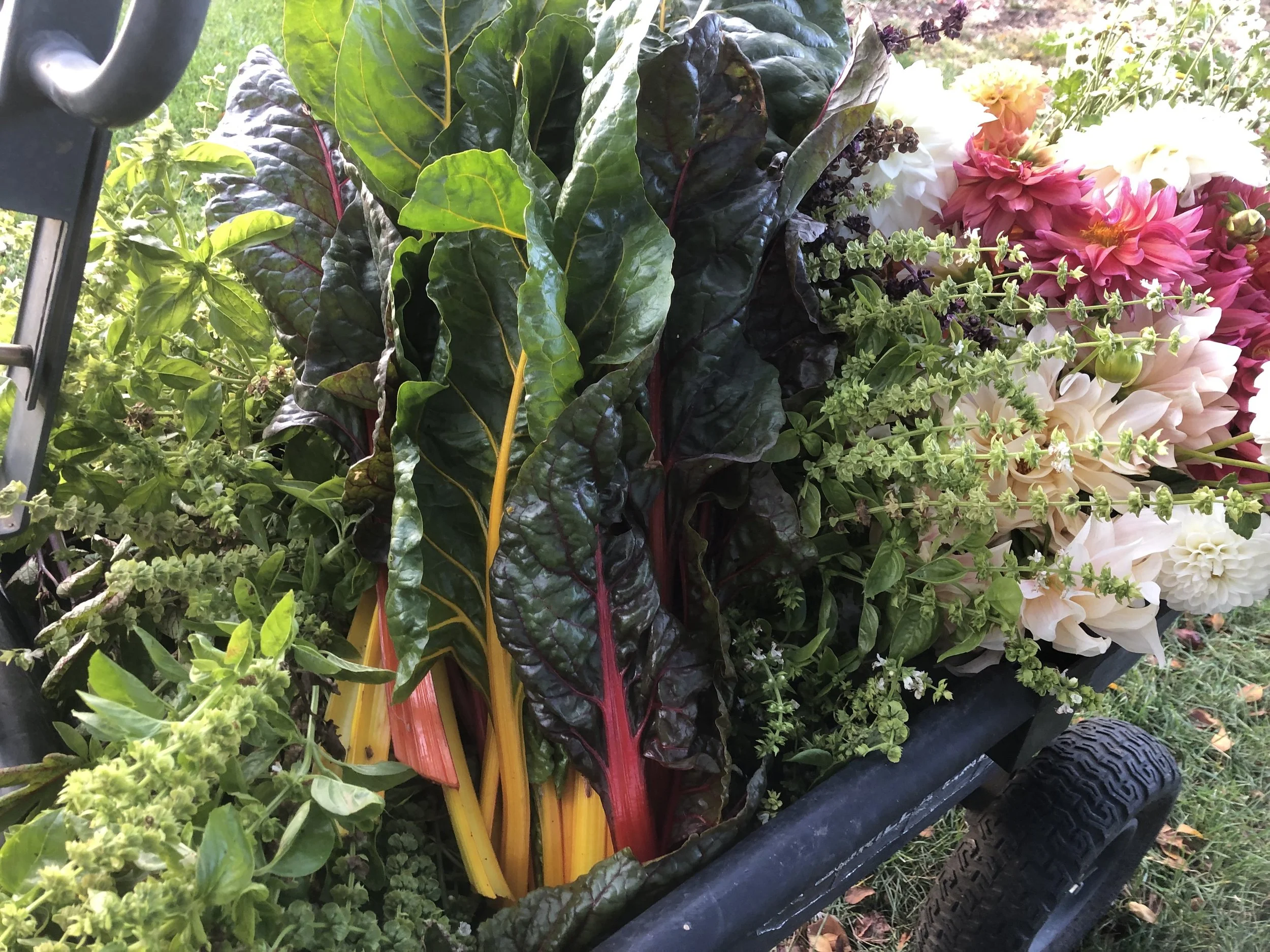Embracing Self-Sufficiency: A Journey That Doesn’t Require A Homestead
Self-sufficiency has become increasingly popular. Spurred by skepticism of reliance on corporations, the desire to live more healthy and simple, fallout of the pandemic or the impact of inflation on everyone’s wallets and lifestyles, we all feel the pressure to change something on some level. But where do we start?
snacking in the garden
Not everyone has sprawling land, an inheritance, or the funds to buy acreage to turn into a homestead or farmstead, especially if you are just entering the real estate market. In some regions the availability of land is simply not there, and elsewhere it will never be financially attainable for most people. However, what urban, suburban, and rural regions have in common is the ability to live a more self-sufficient lifestyle no matter the location. Small, intentional changes can lead to a deeply fulfilling, sustainable lifestyle.
What exactly does ‘Self-Sufficiency’ mean today?
It’s the desire to be more independent and rely less on complex industrial-level systems that are unstable. Just look at the industrial meat packing industry or any number of produce e-coli breakouts tied to a conglomerate of four farms growing most of our nation’s carrots, for example. This plainly exposes that our reliance on massive integrated food systems is unstable , and if one link in the chain breaks, it all goes down.
Primary reasons to move towards more self-sufficiency could be to save money, increase health and well-being, improve connections to the land and local communities, learn new skills, and be happier overall through building resilience, confidence, and knowing you are part of a solution to have more control over your personal outcomes in life. Some advantages of living in urban or suburban areas are easier access to better quality food through farmers markets, higher quality grocery stores and health food stores. While more rural areas may have more access to good quality grain, flours and animal products like bulk grass-fed meats, milk, and eggs that you can buy straight from the producer.
Areas where you can increase your self-sufficiency:
Food Security:
Growing your own food
home cooking
sourcing from local farms/ producers
This can enhance your ability to provide for yourself and reduce dependency on grocery stores and processed food that is far less nutritious and is known to contribute to chronic disease.
ACTION: grow a small garden of herbs and salad greens or purchase a quarter local, grass-fed cow to provide your family with nutritious salads and high quality protein.
Financial Independence:
Managing your finances, budgeting, paying off debts & saving
reduce reliance on loans, credit cards or external financial support
ACTION: prioritize paying off a credit card then using the leftover money to build a backyard oasis. Living in debt is suffocating and the sooner you get out the better. A home mortgage is one of the few debt situations that may be beneficial in the end.
DIY:
Not a new mindset, but really think about how you can do more and outsource less.
DIY repairs, maintenance, and building projects, gardening, building, welding, batch cooking, and financial literacy will increase your ability to manage various life challenges.
ACTION: Learning to fix the drywall hole yourself, save money, and learn a new skill.
Resource Management:
Be efficient and recycle resources (clothes, furniture, water) This can help reduce your environmental impact. Managing your energy is a huge one. Wood stoves, gray water systems, and other creative infrastructure to decrease your reliance on the grid. Don’t think this matters? It just might one day, and you’ll save money in the meantime.
Quality Food:
Grow your own and/or locally source. Food is my favorite entry point to increasing self-sufficiency as it is something we all EVERYDAY, ALL DAY and can make a difference no matter where you live. Why have more control over where your food comes from?
You are relying less on industrial systems that are unstable.
Industrial or centralized food processing removes the most nutritious part of the food to make it more shelf stable. This leaves you with highly processed food devoid of nutrients and likely contributing to inflammation and the pathway to chronic disease.
Modern agriculture practices of animal confinement and monocropping produce less nutritious food
Pesticides permeate the food we consume and the environment- from produce to bread to snacks, if it’s not organic it’s likely got it in it.
Grow Your Own:
Lots of people have been jumping on the gardening craze and I can tell you it is 100% worth it, no matter the size space you are working with. Learning to grow food is like having a vitamin shop in your backyard, fun, fascinating, and will take your tastebuds to a place they haven’t been before.
If you are just starting out I recommend some of the following strategies;
Grow what you like to eat!! You’d be surprised how many people grow things they don’t like to eat.
If you have a small space, start with container gardening, herbs or salad greens. These can be grown easily as a beginner and with part shade too!
Always start with good quality soil- your most important ingredient in gardening
Start with some of the easiest foods to grow from seed and master your techniques: lettuce, greens such as kale & swiss chard, radish, beans, peas, spinach.
If you don’t have the space or desire to grow your own food, the next best thing is to source your produce locally from quality producers through a farmers market, Community Supported Agriculture (CSA) or from local grocers that buy from local farms. Buying food in this manner supports your local economy and ensures you are getting much more nutrients in your diet to support health.
Backyard grocery shopping
A Plug for Local Food
Conventionally farmed produce is usually picked way before it’s ripe which reduces the nutrients in these foods. Harvest to purchase times can be 4 weeks or more for a head of lettuce, and many fresh foods sit in transport from across the country and often the world before they even make it to a shelf. Additionally, our food is far less nutrient dense than it was 50 years ago due to soil degradation from mono-crop farming and other factors, and you have foods disguised as healthy in the grocery store that hardly fit that description.
The journey towards self-sufficiency is beautiful and fulfilling, regardless of where you start. Every day since I have started this journey, I am curious, live in a state of constant hope and excitement in growing plants and being more independent from ‘the man’. Anyone can walk this path no matter where you live, all while increasing your health and happiness.



